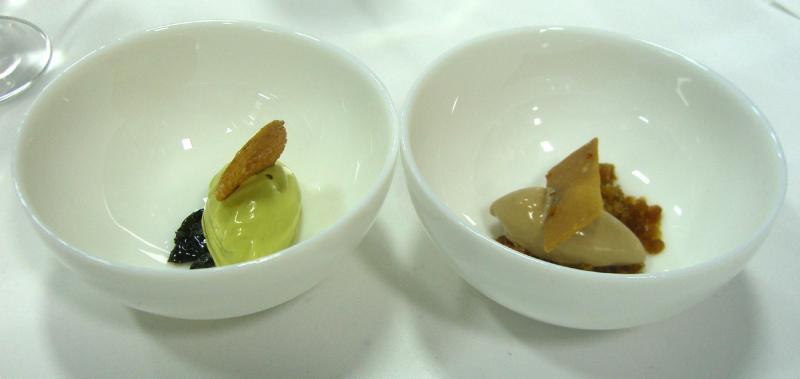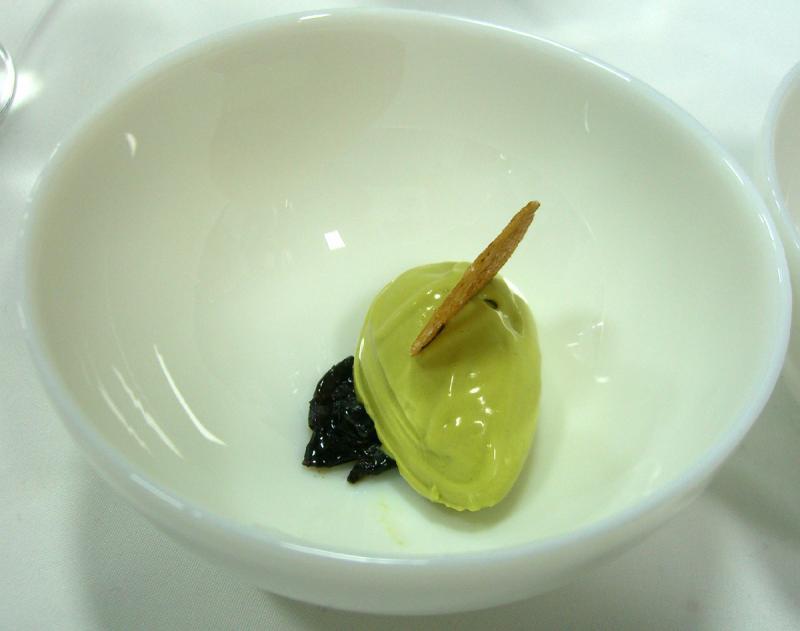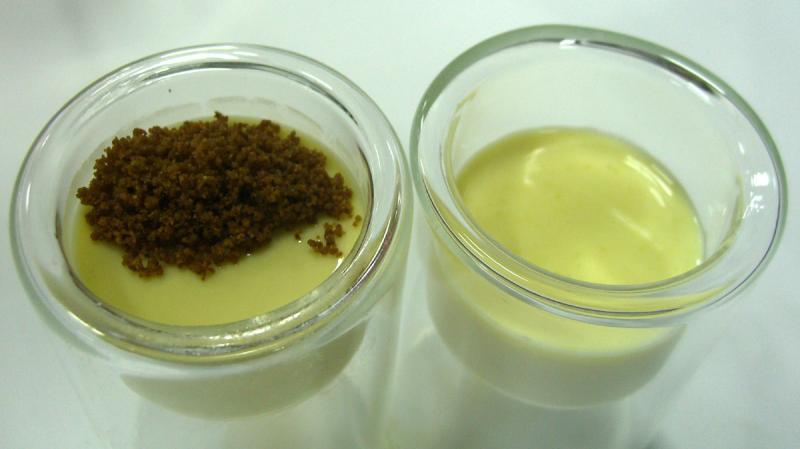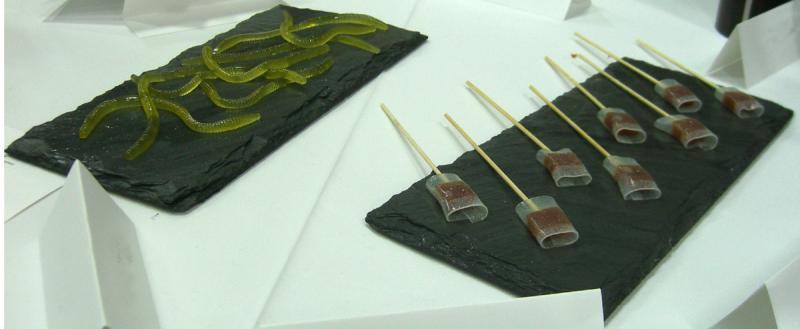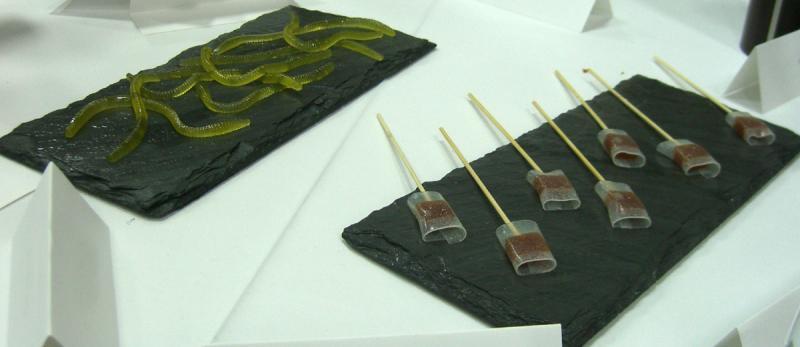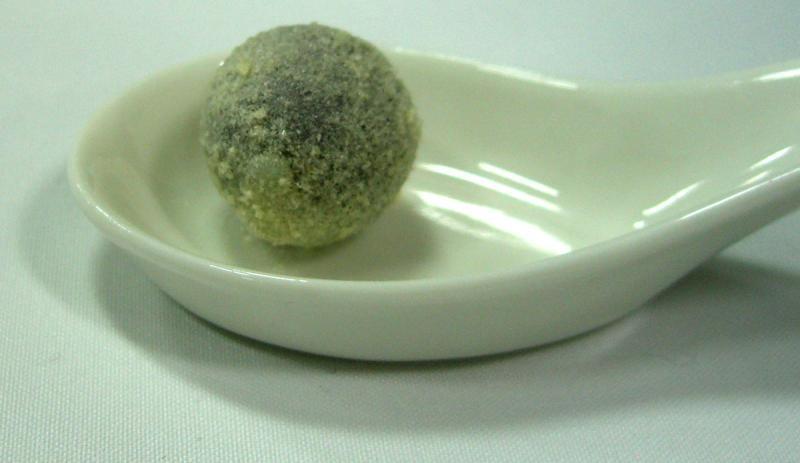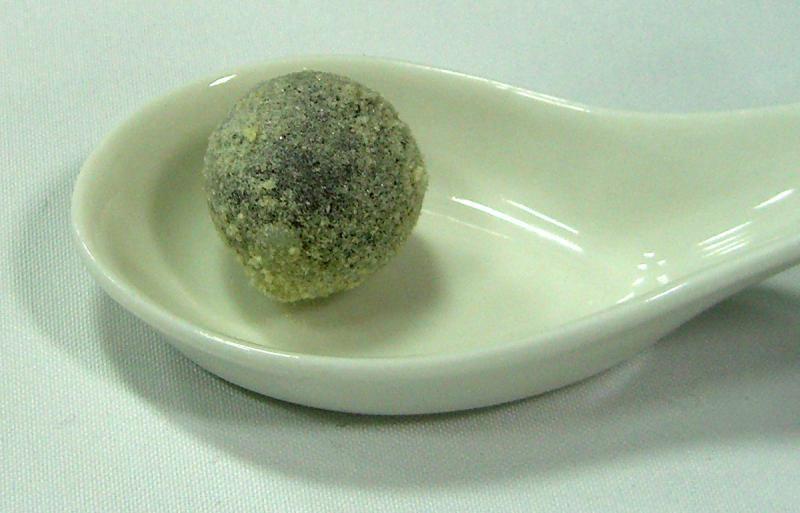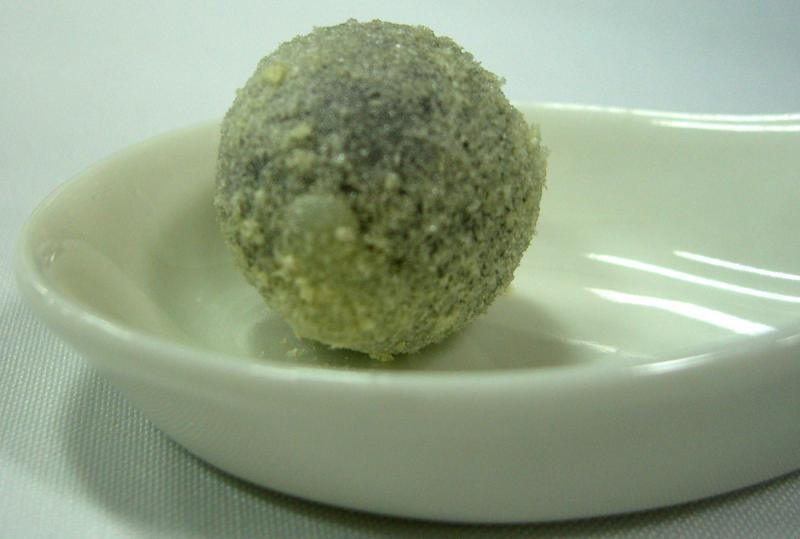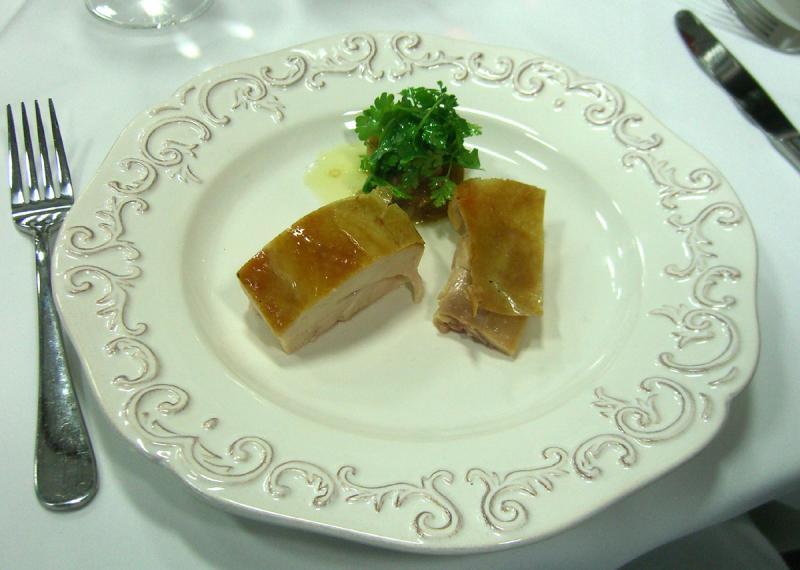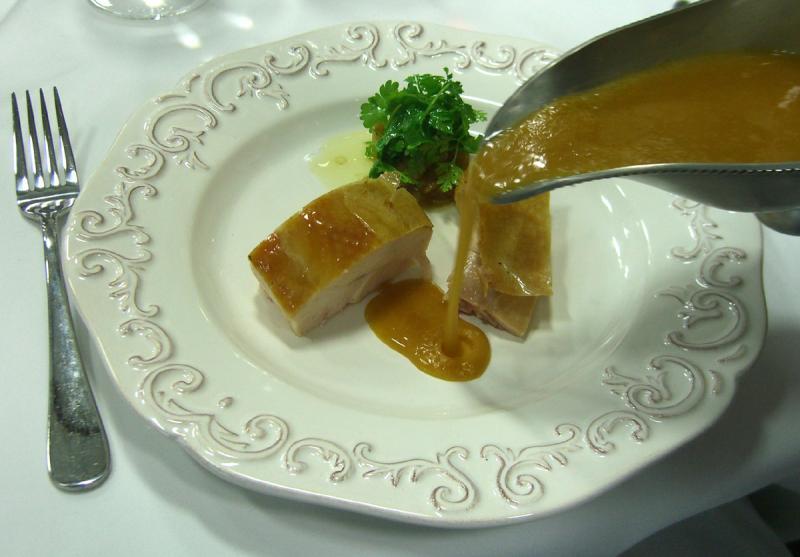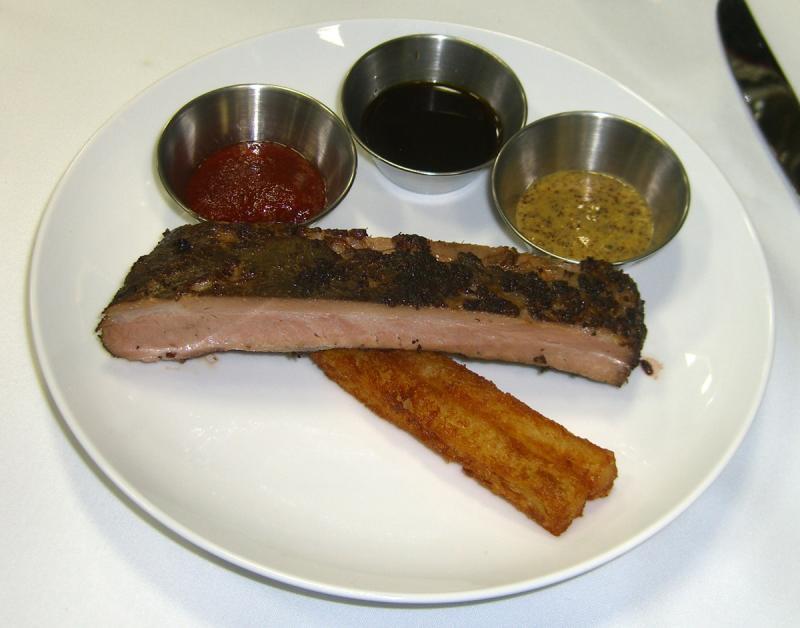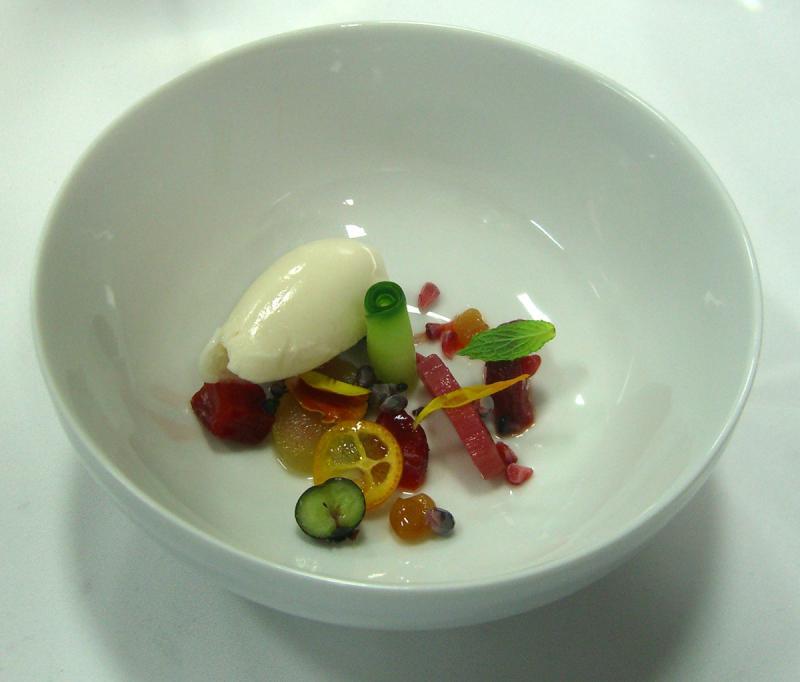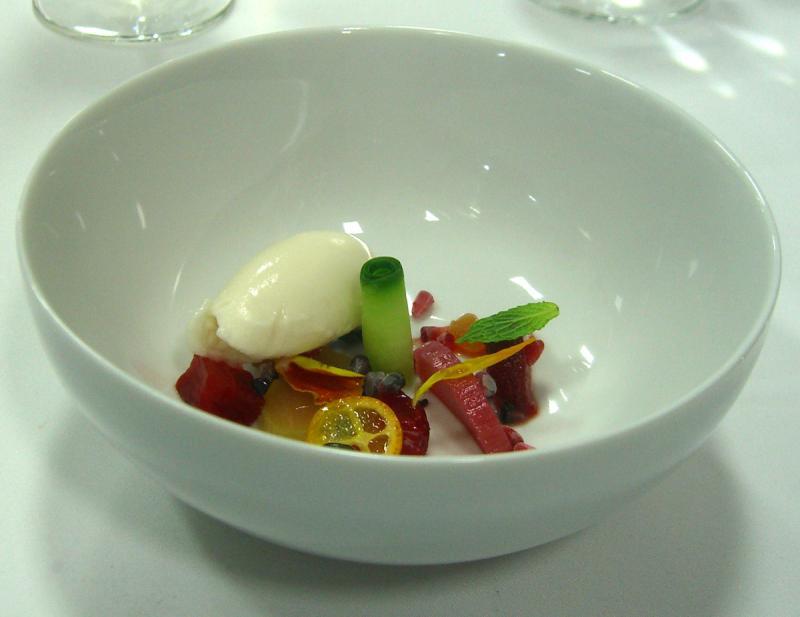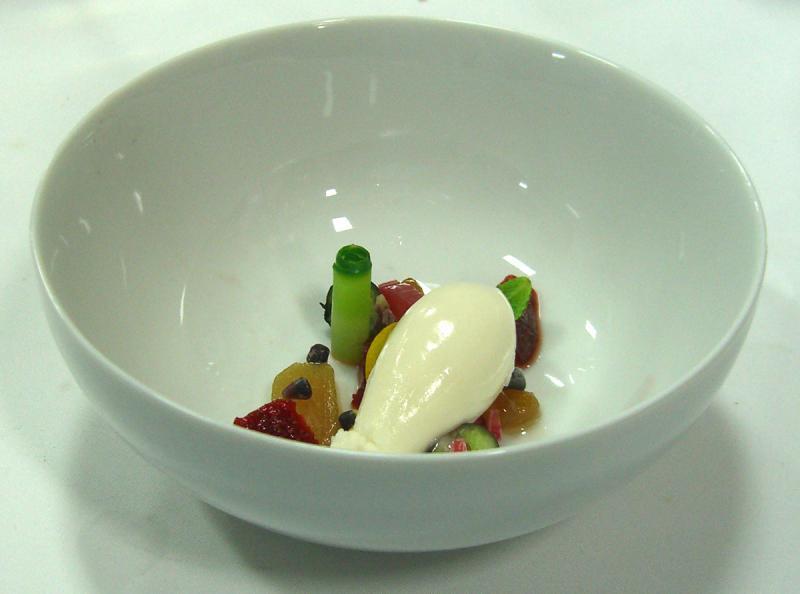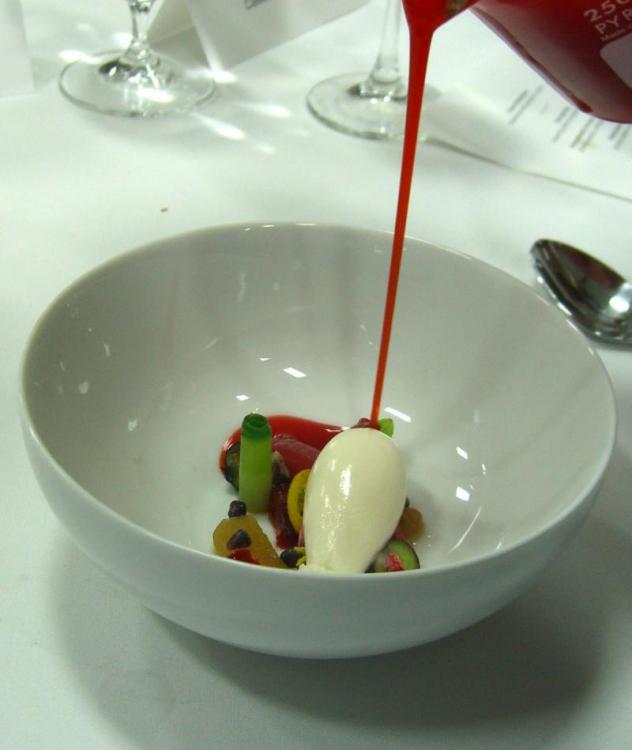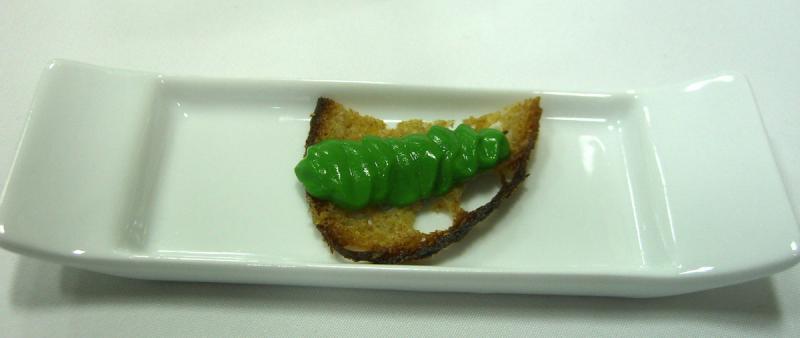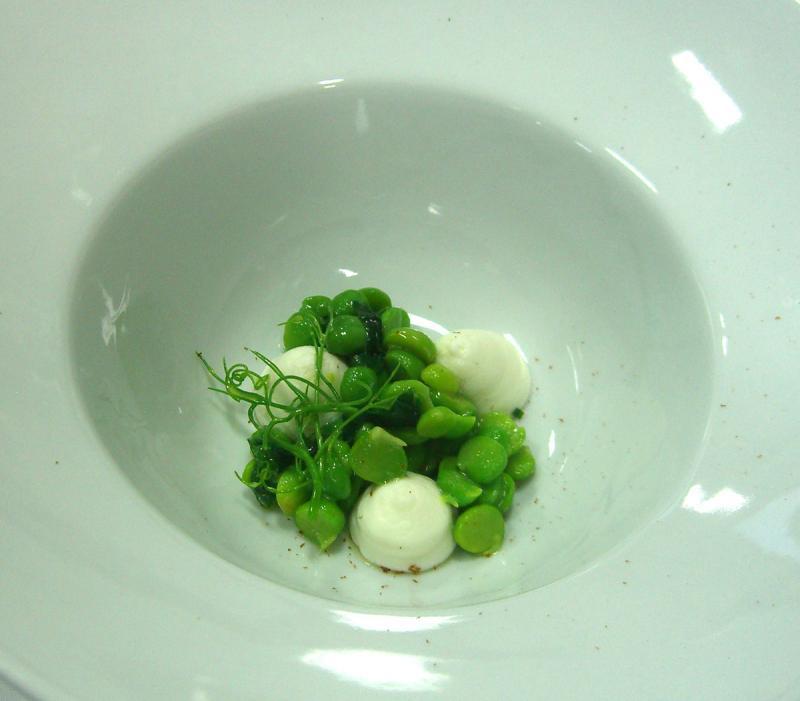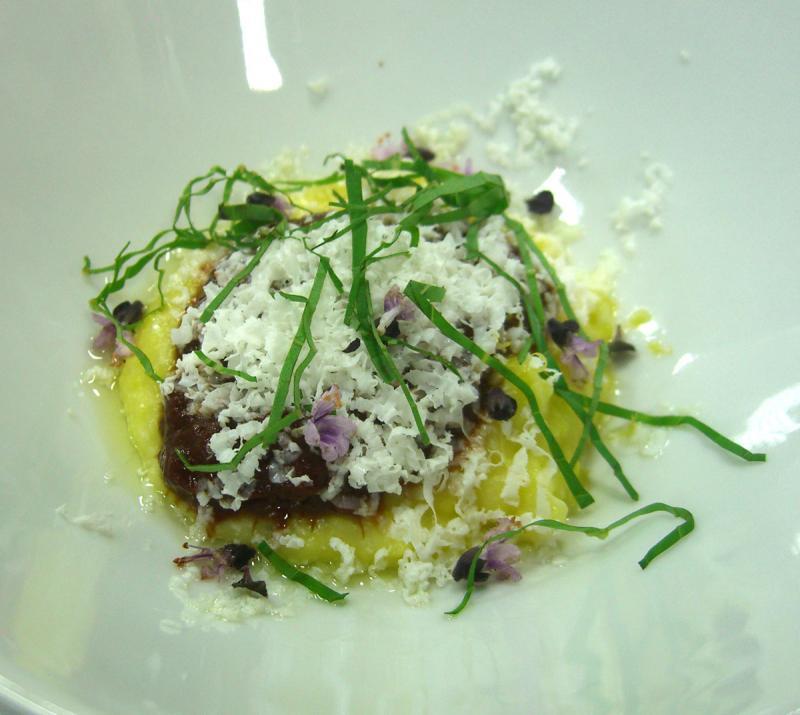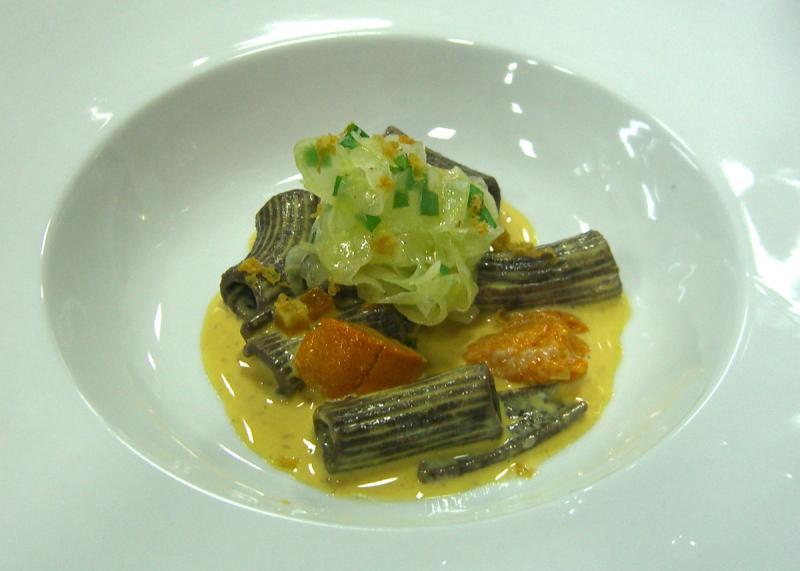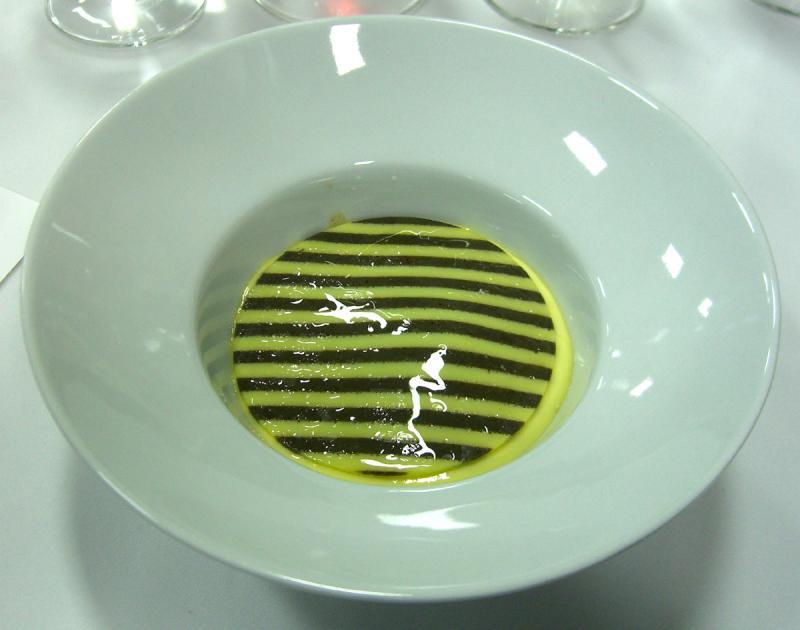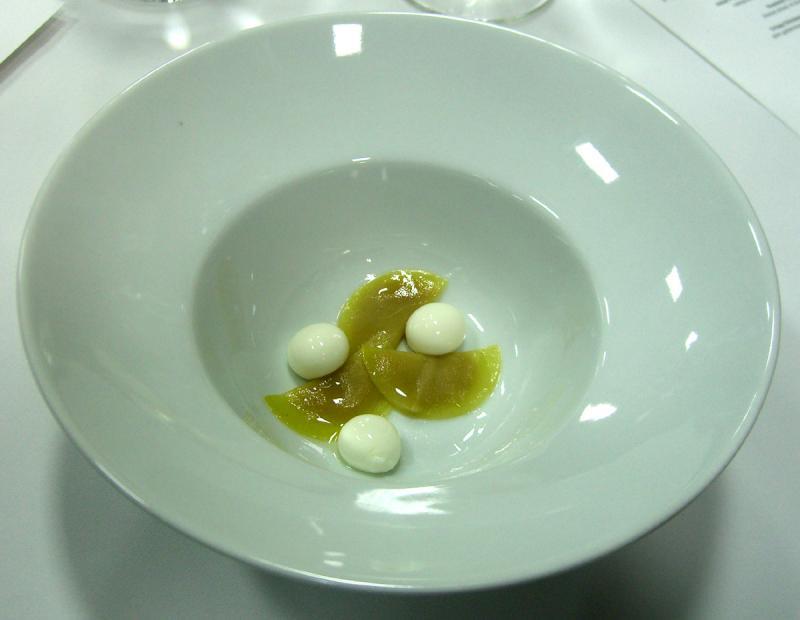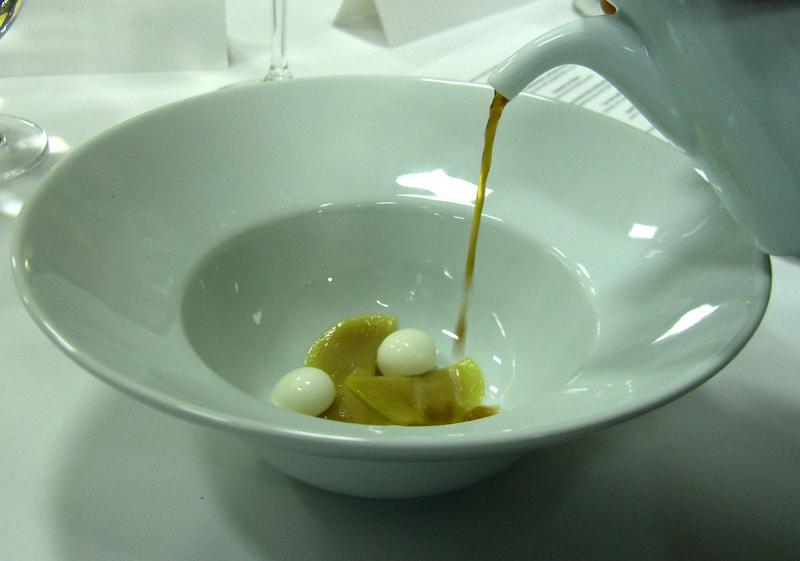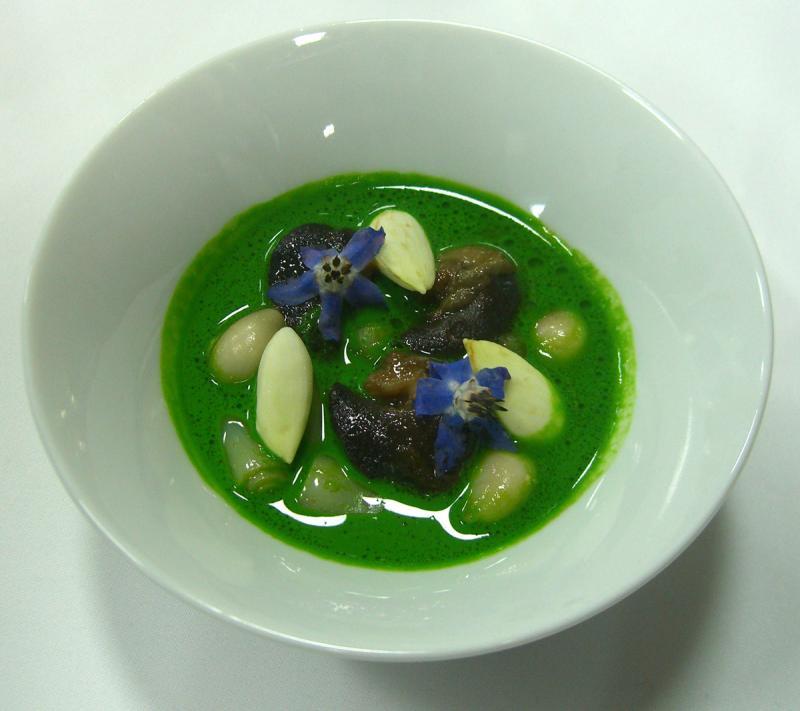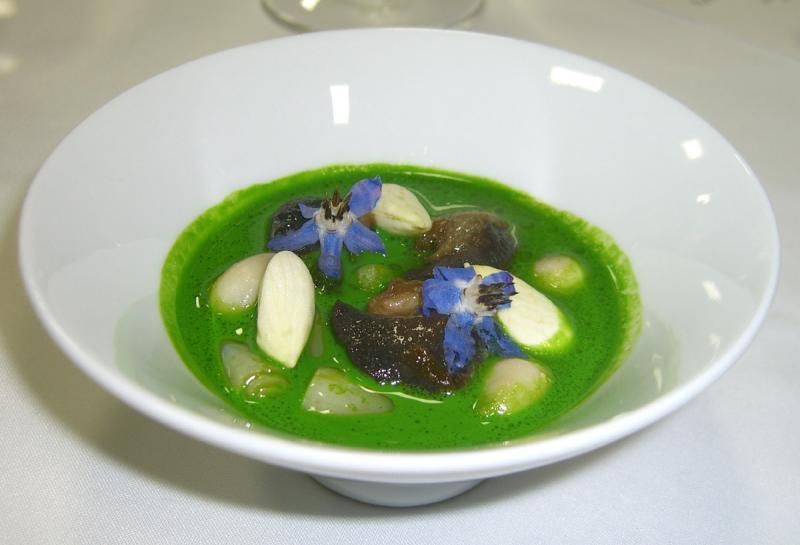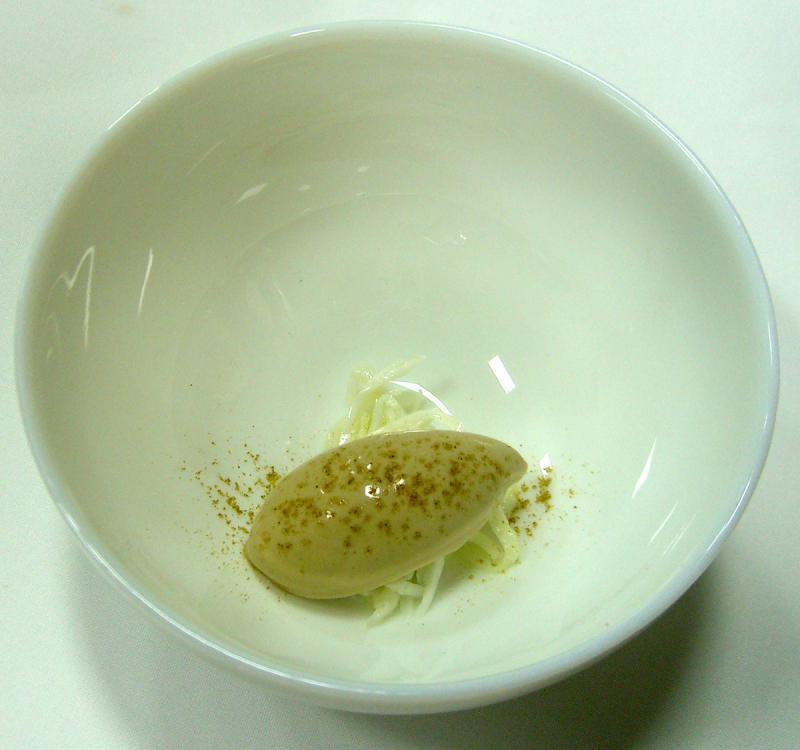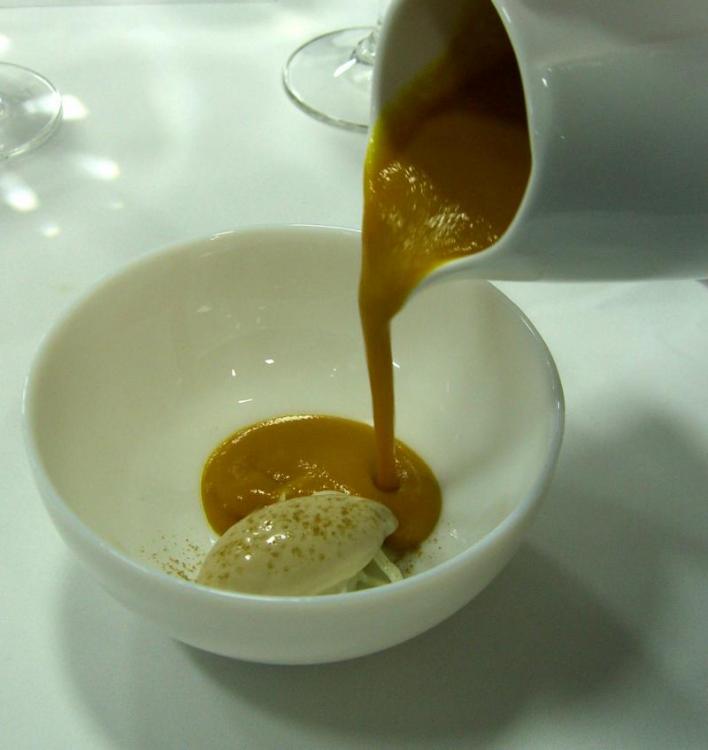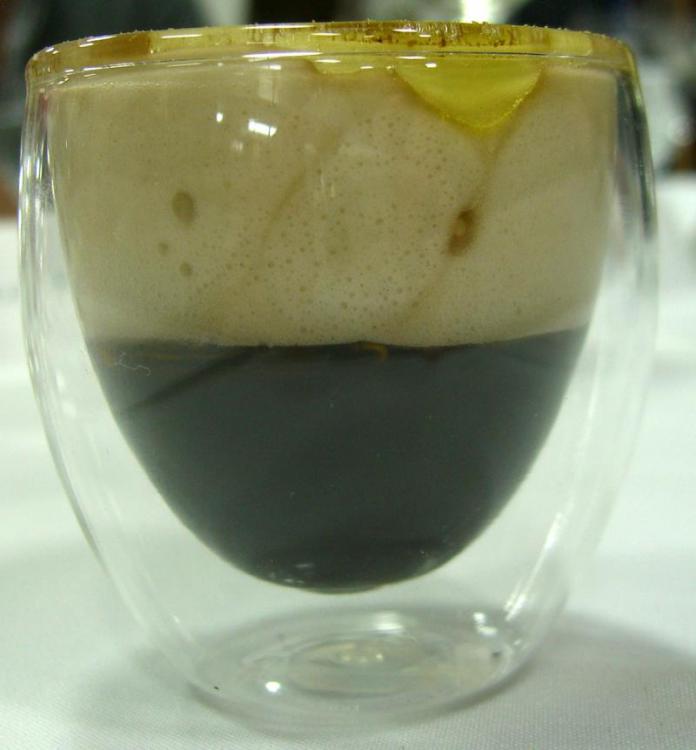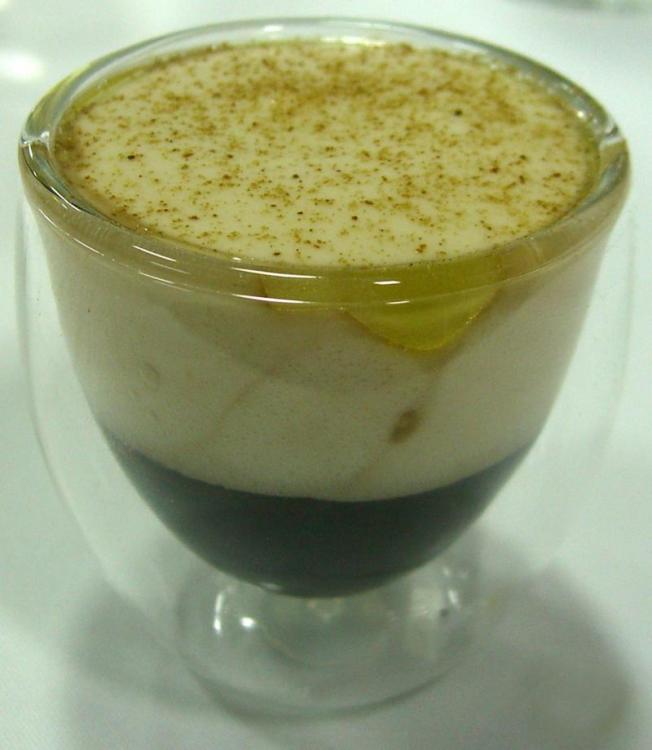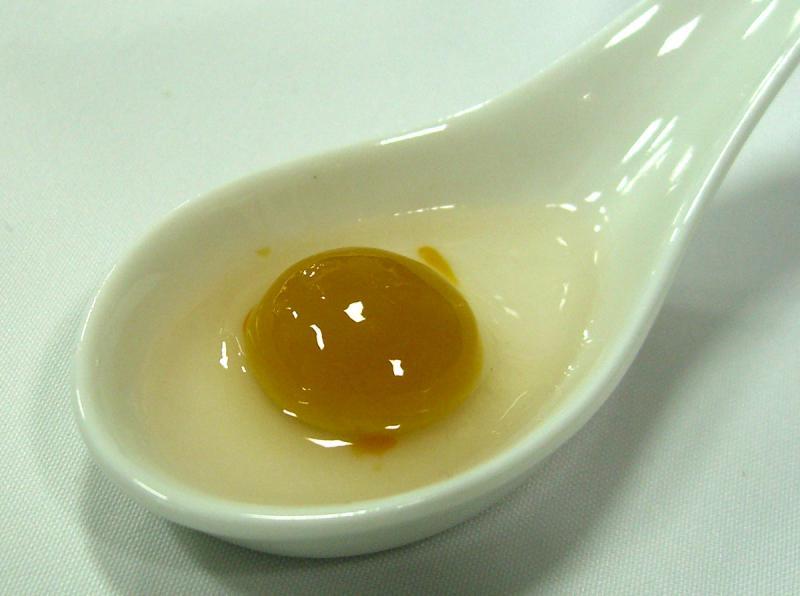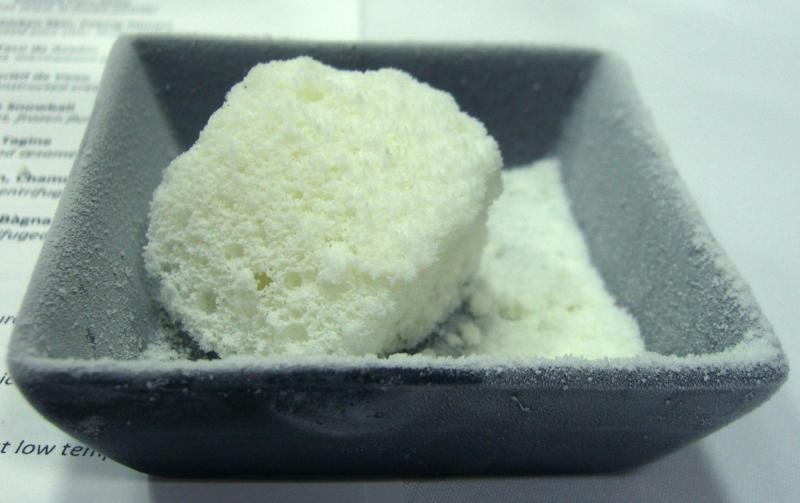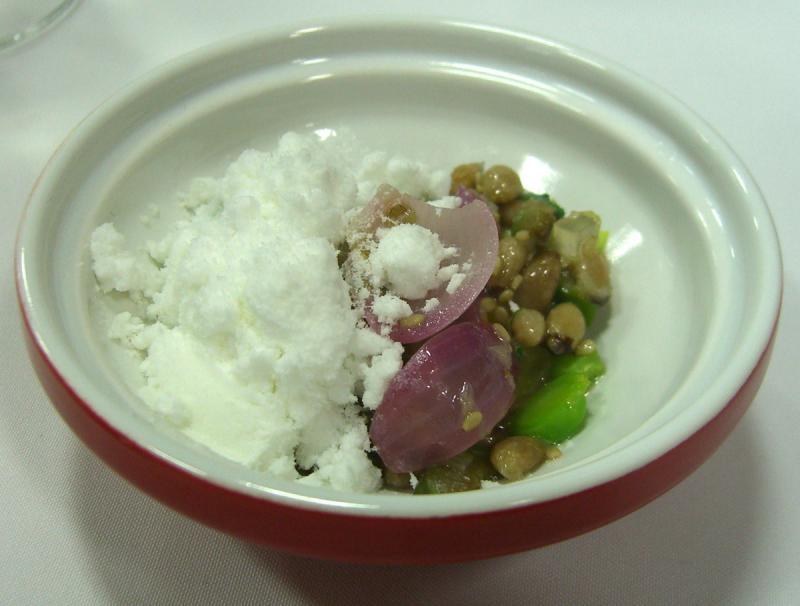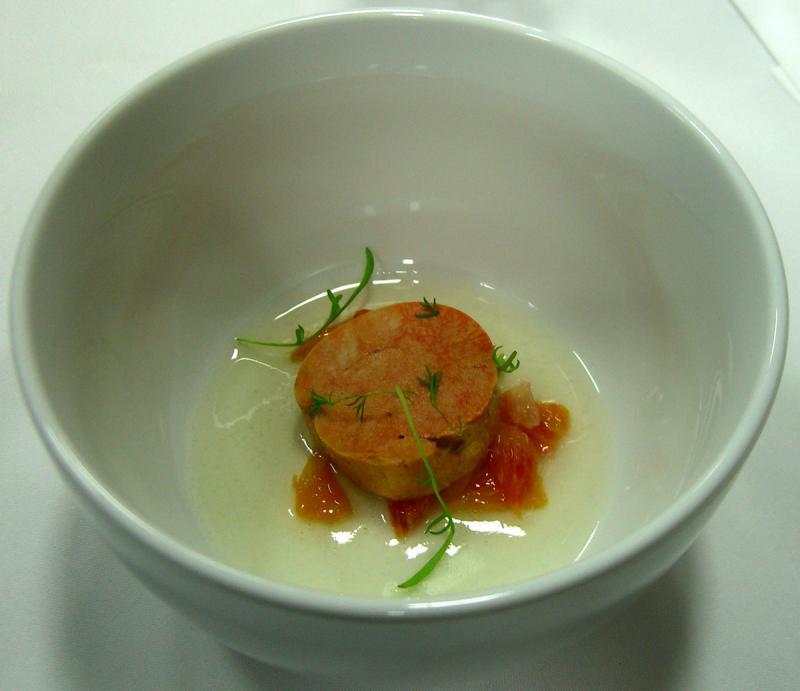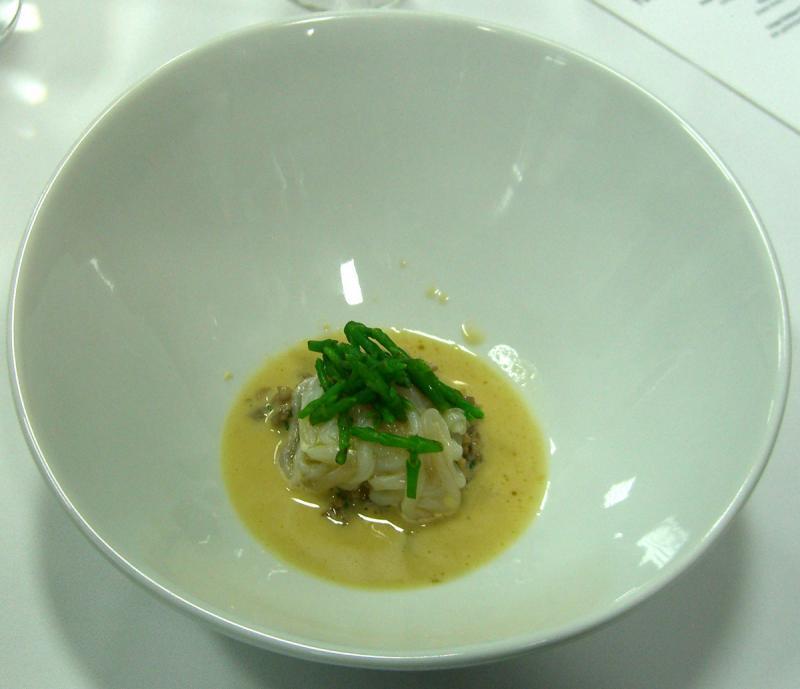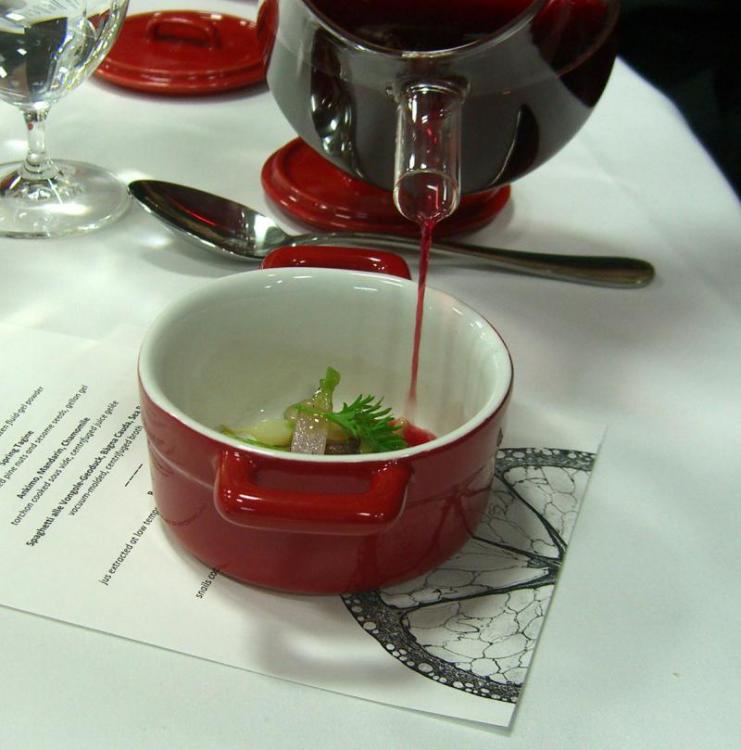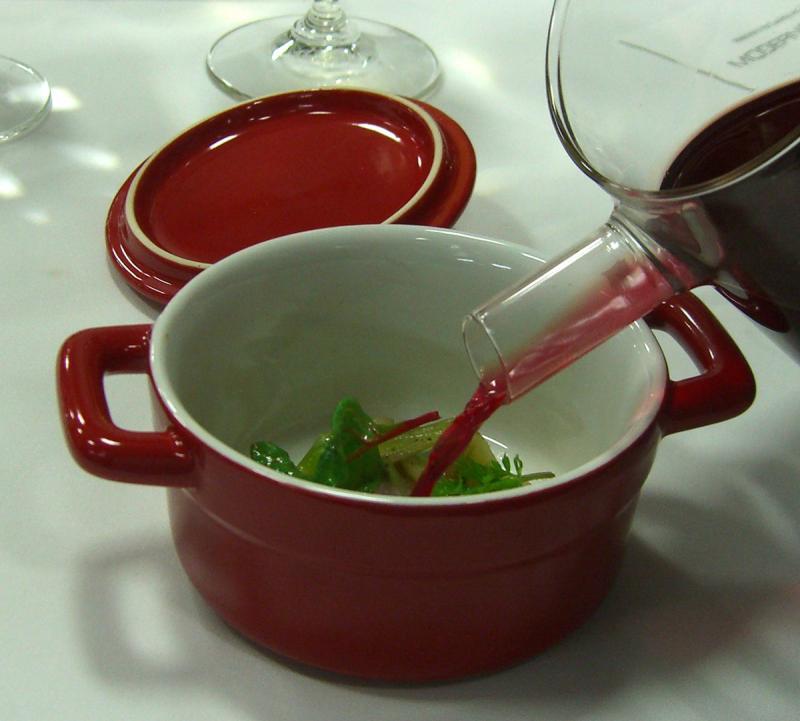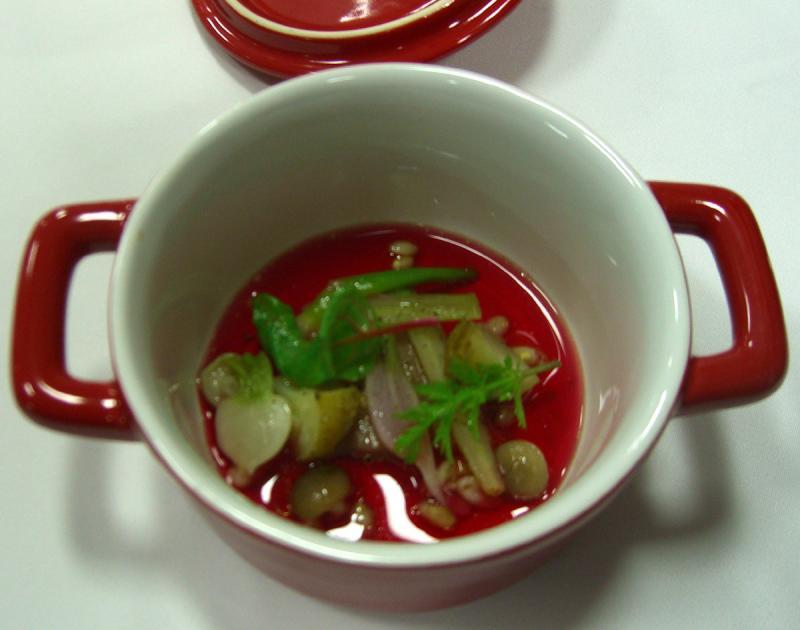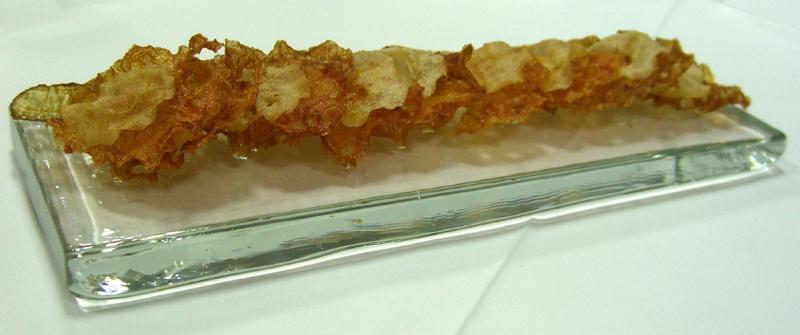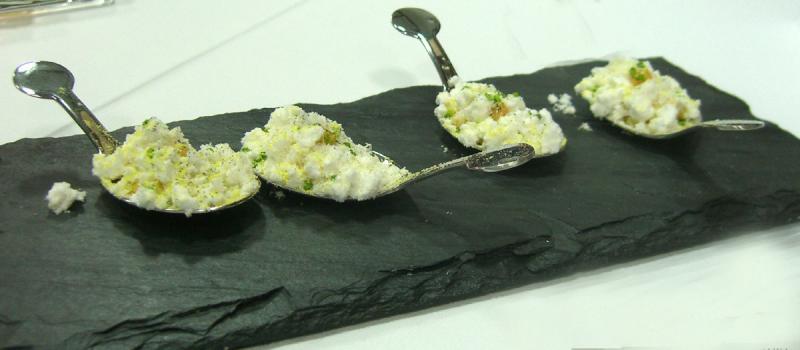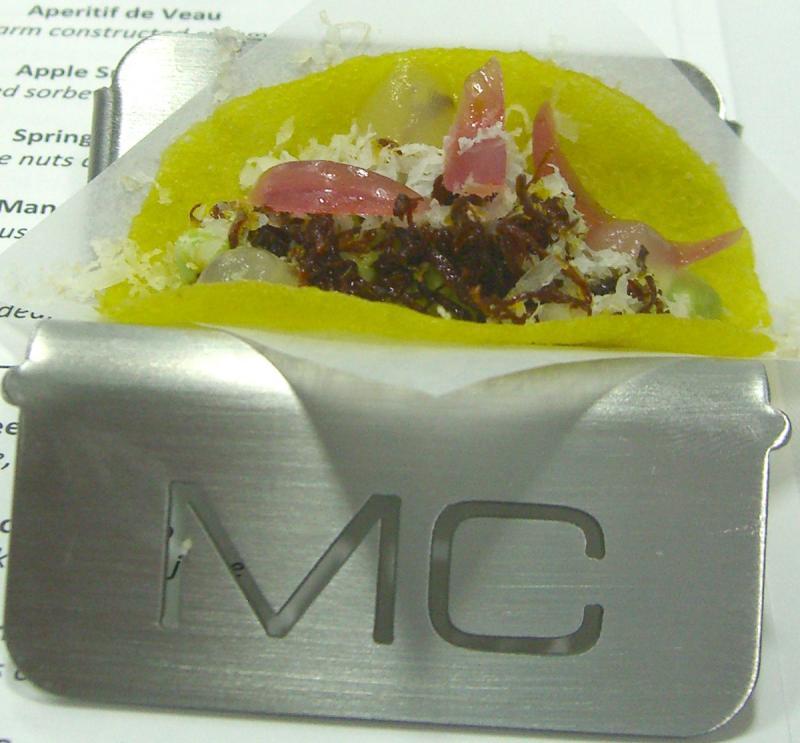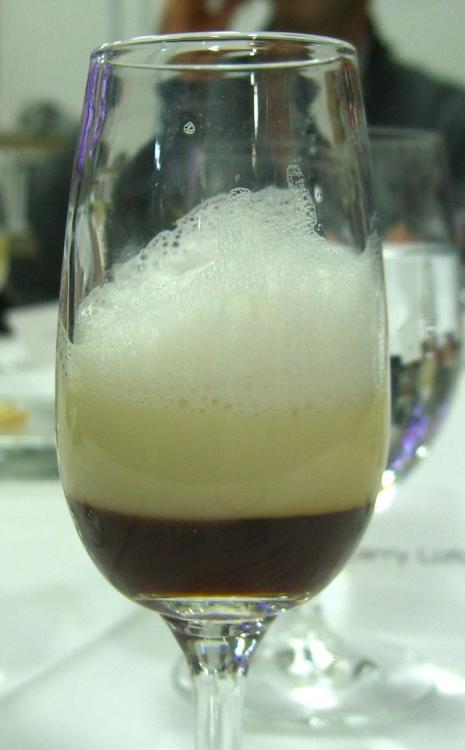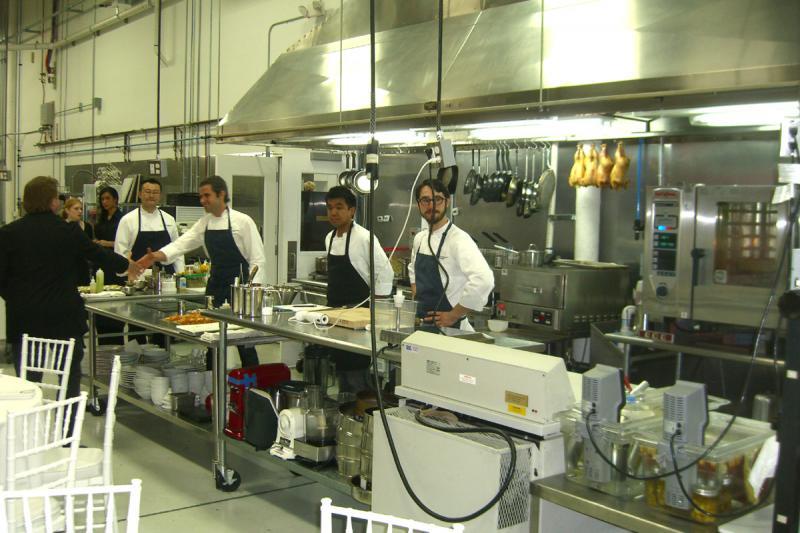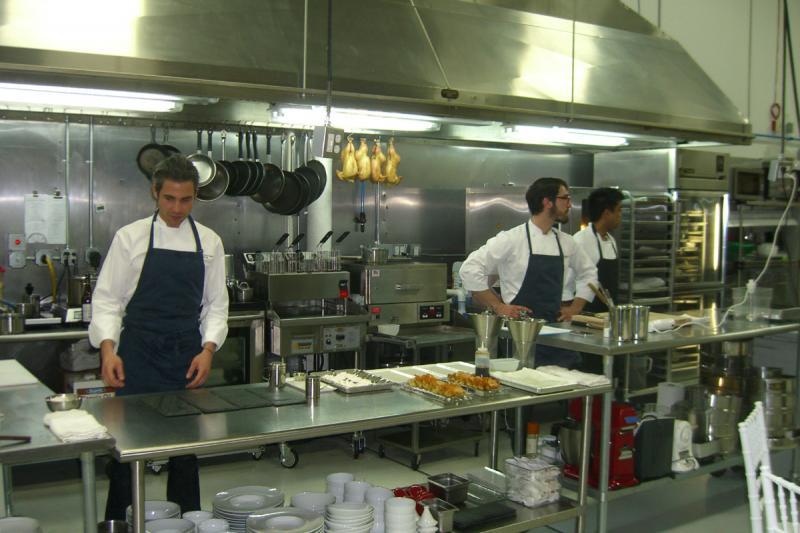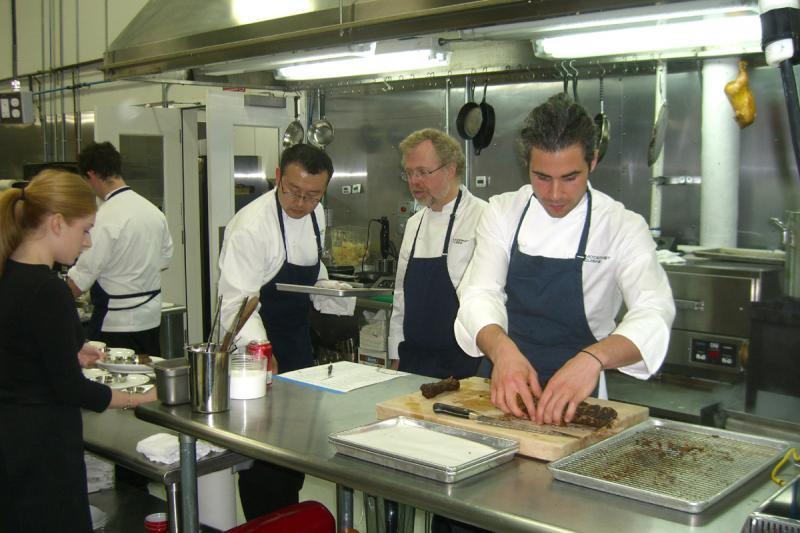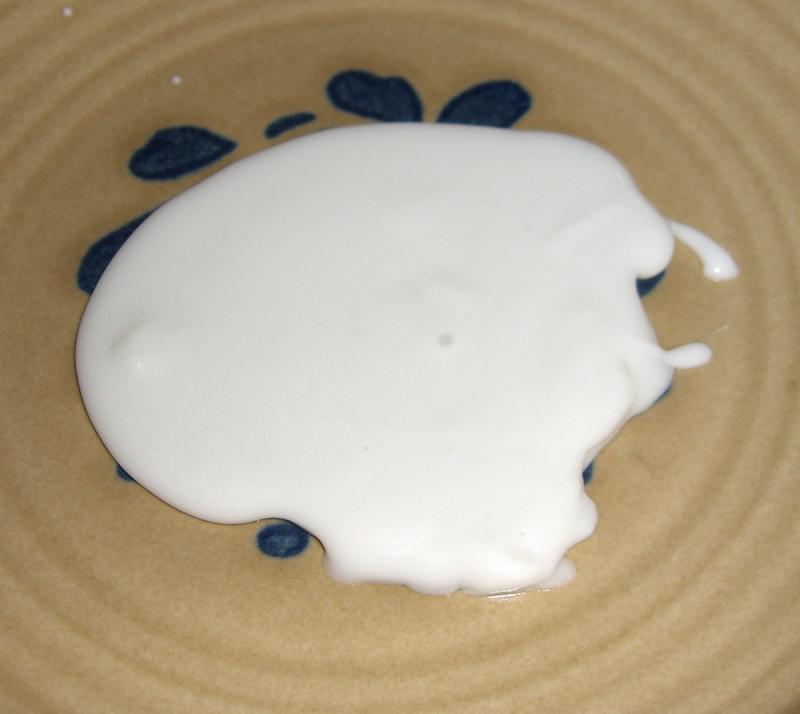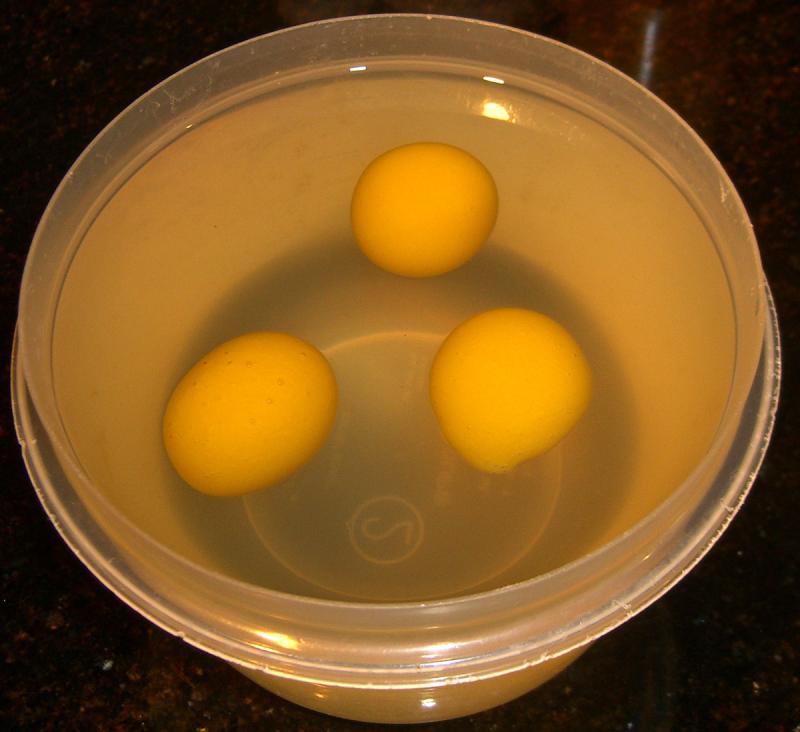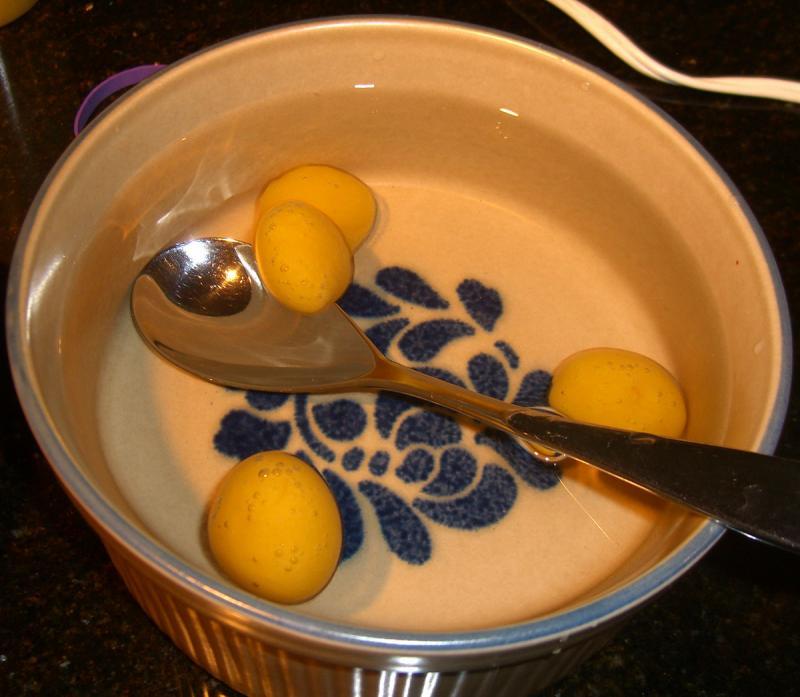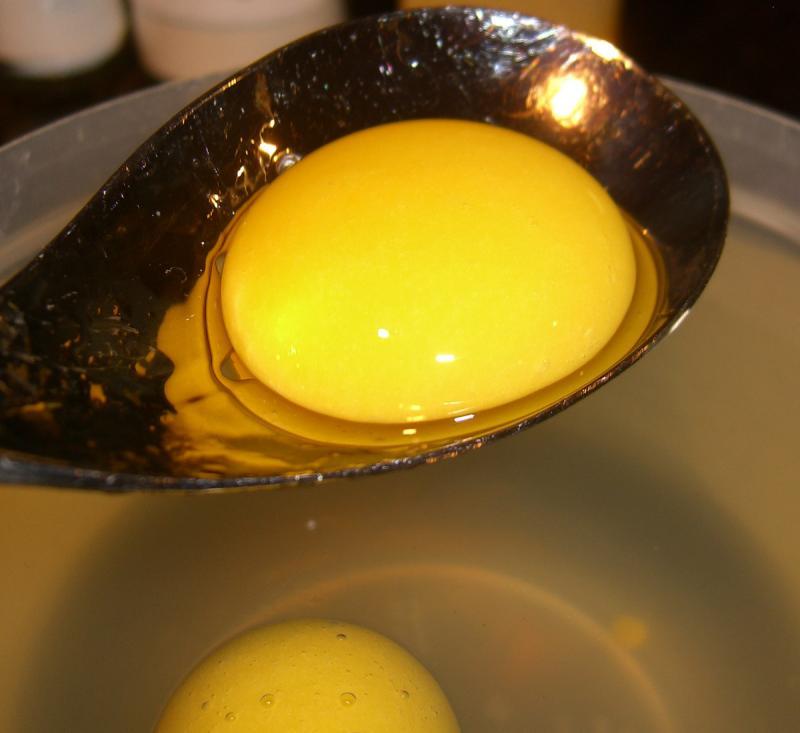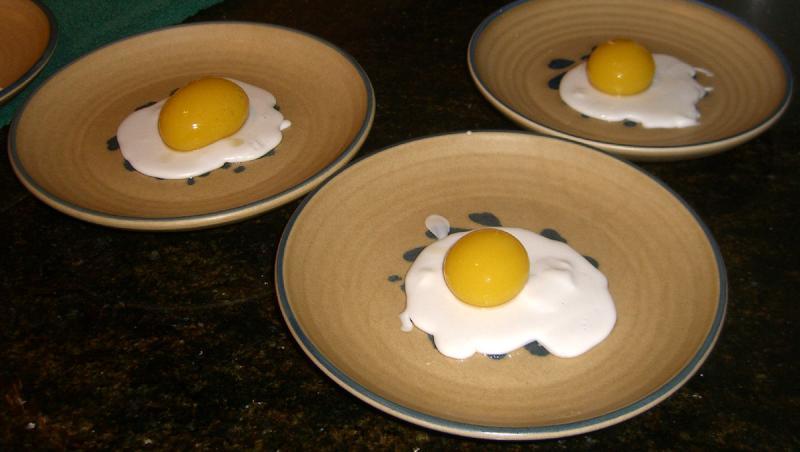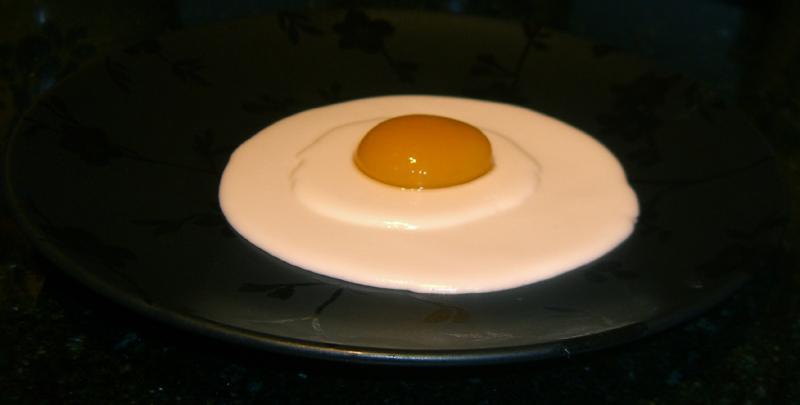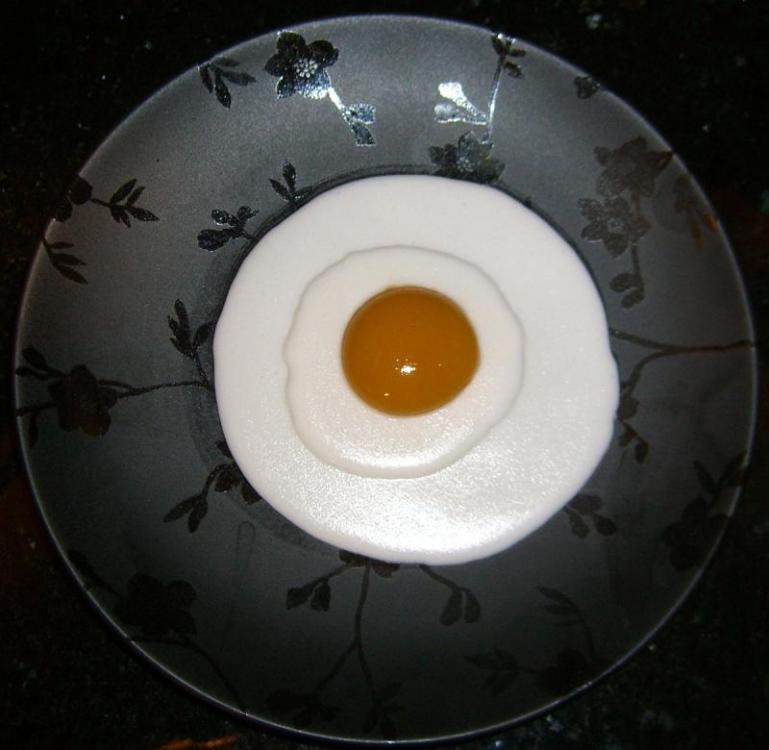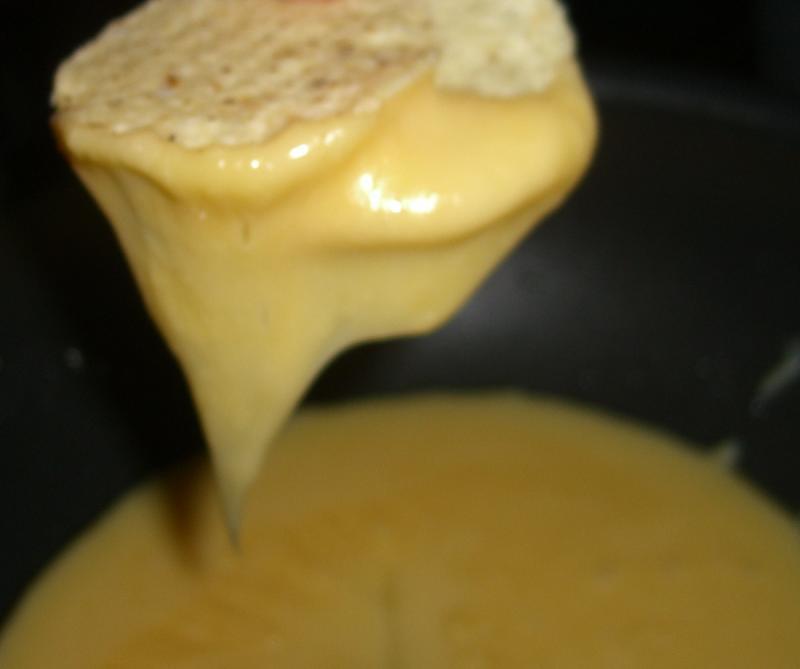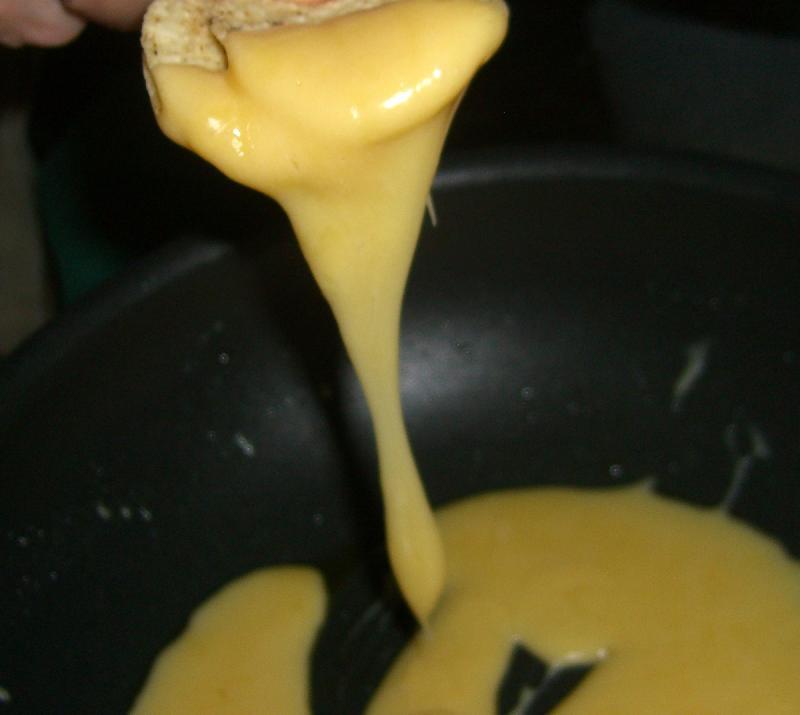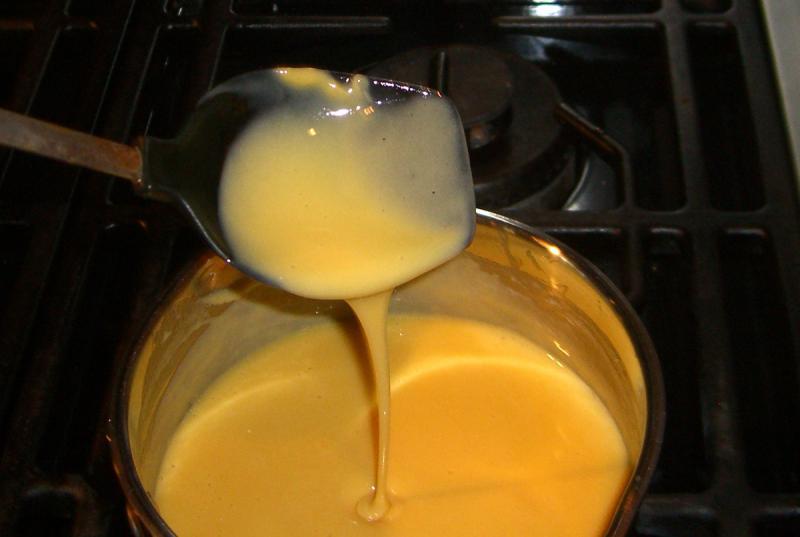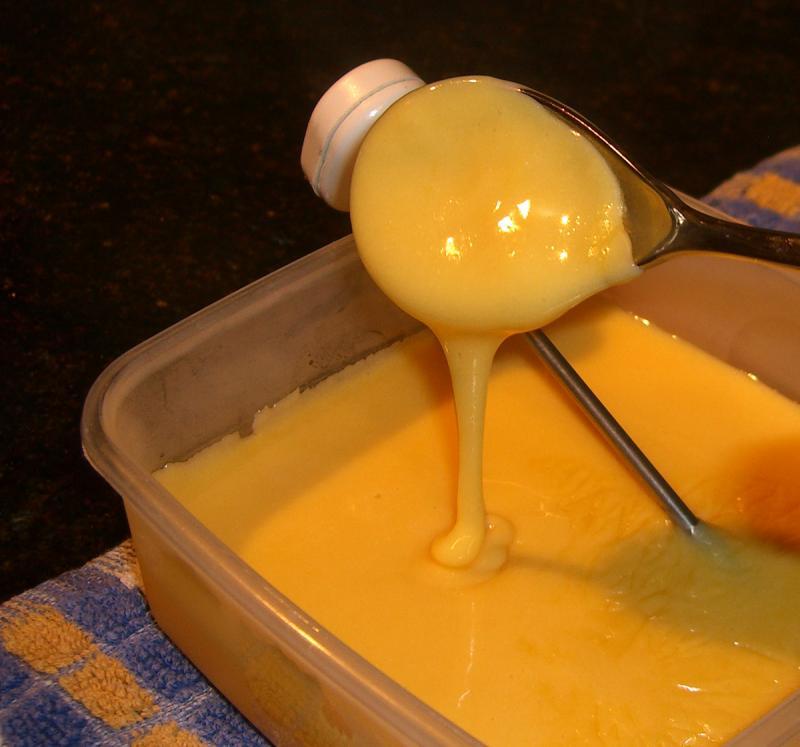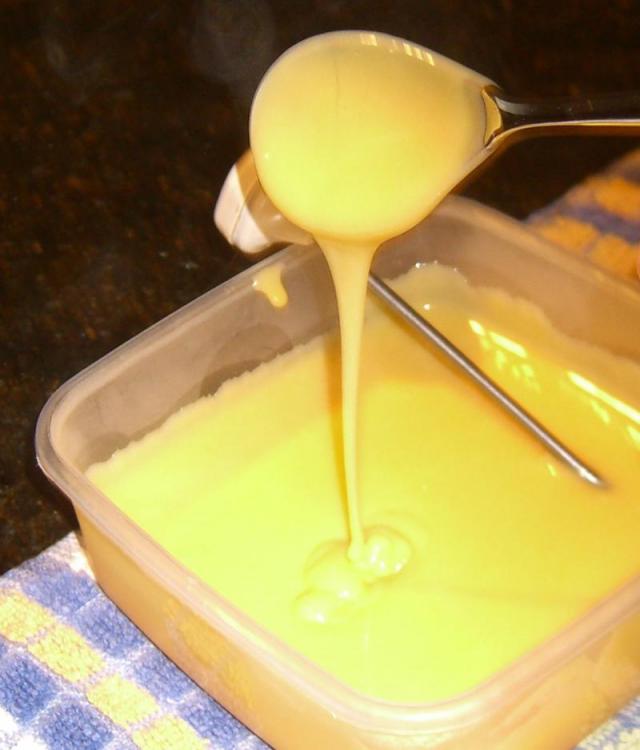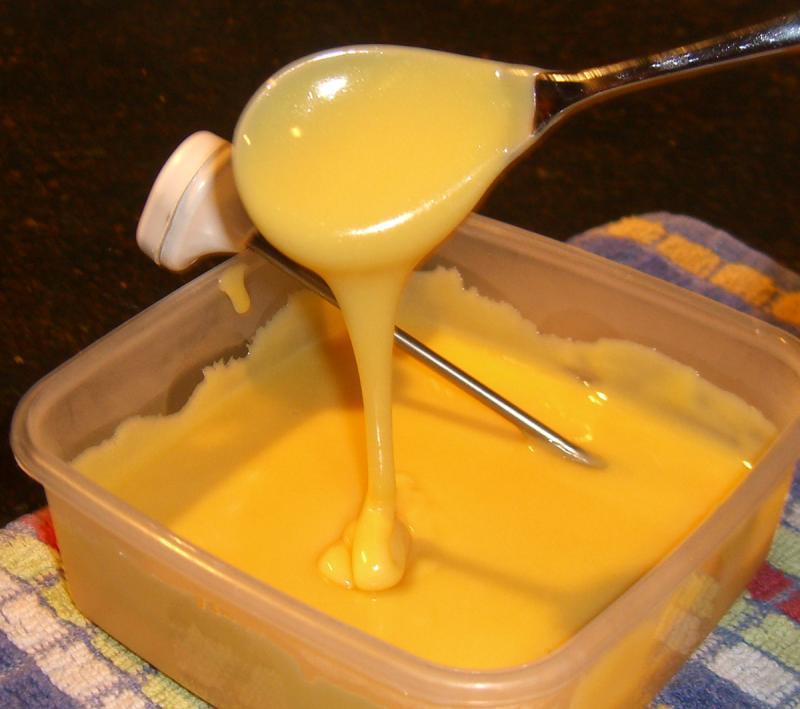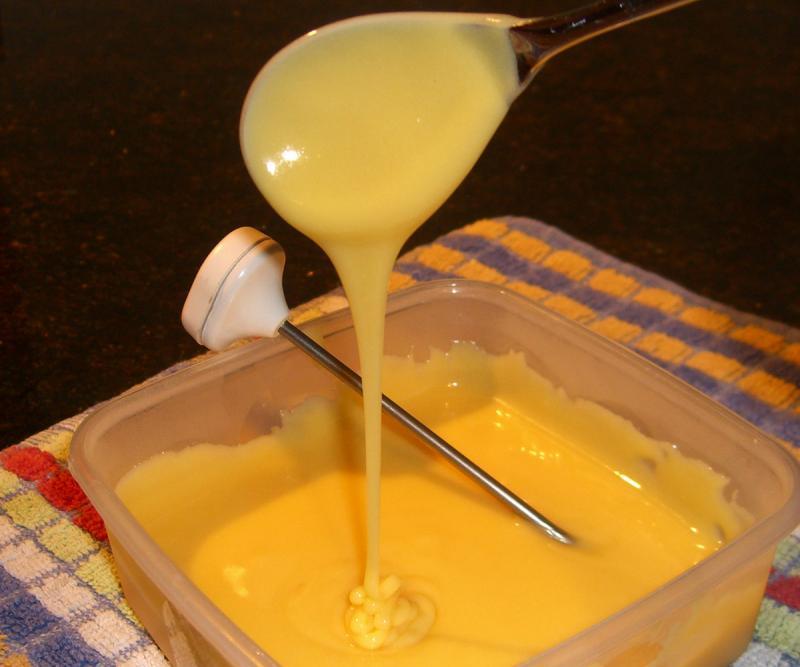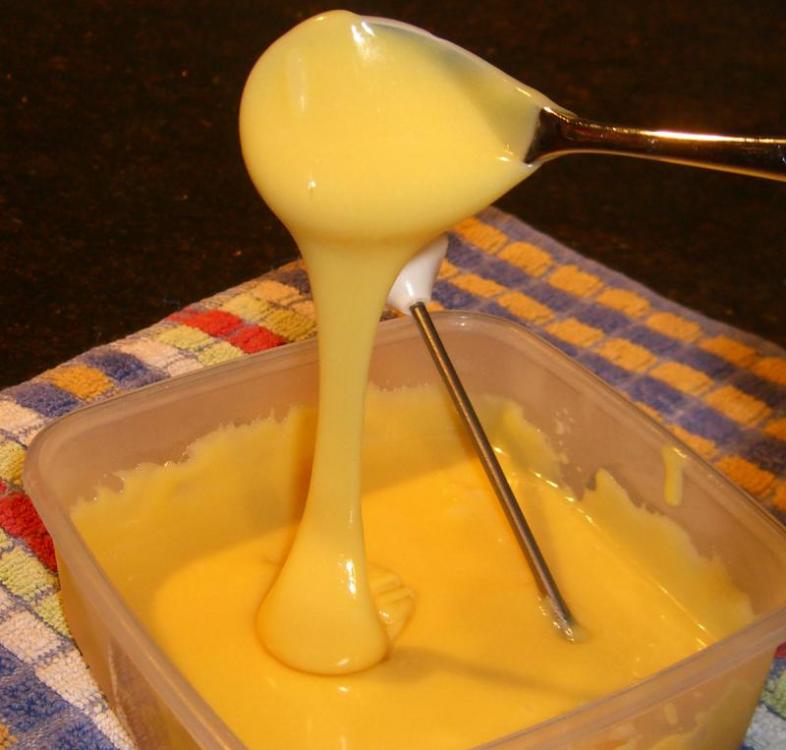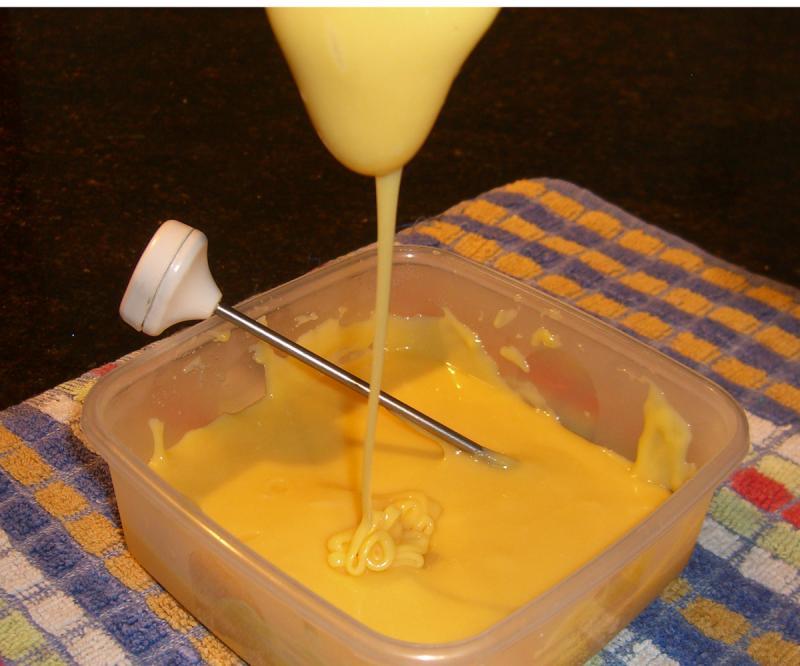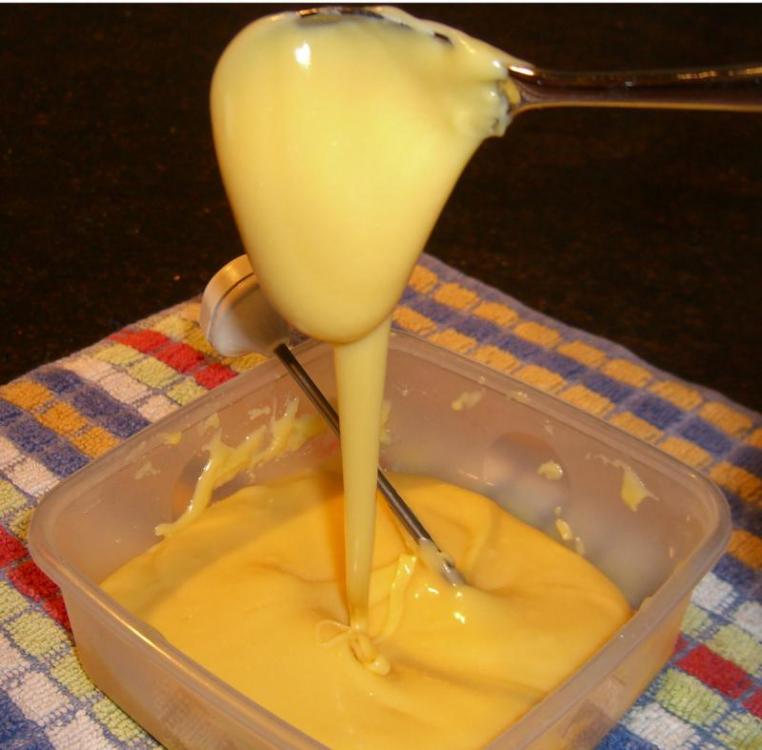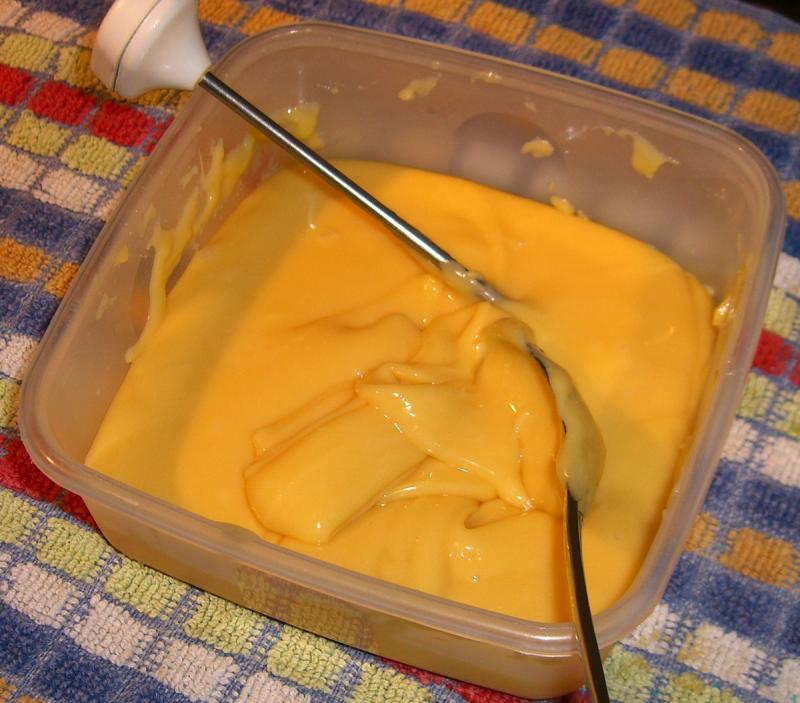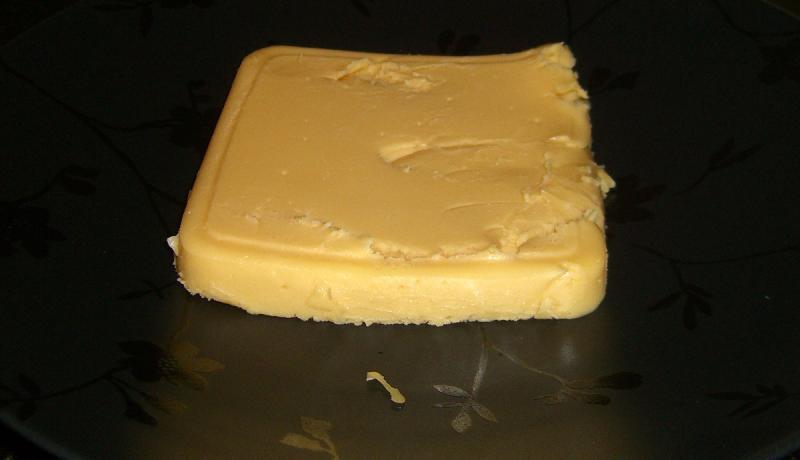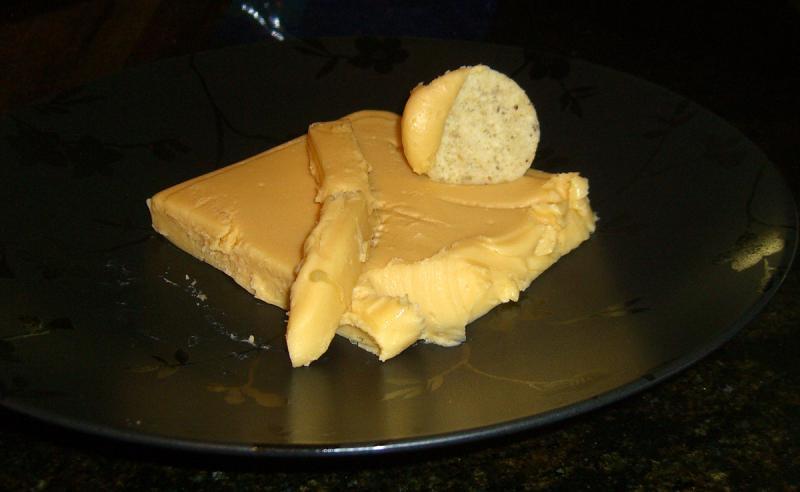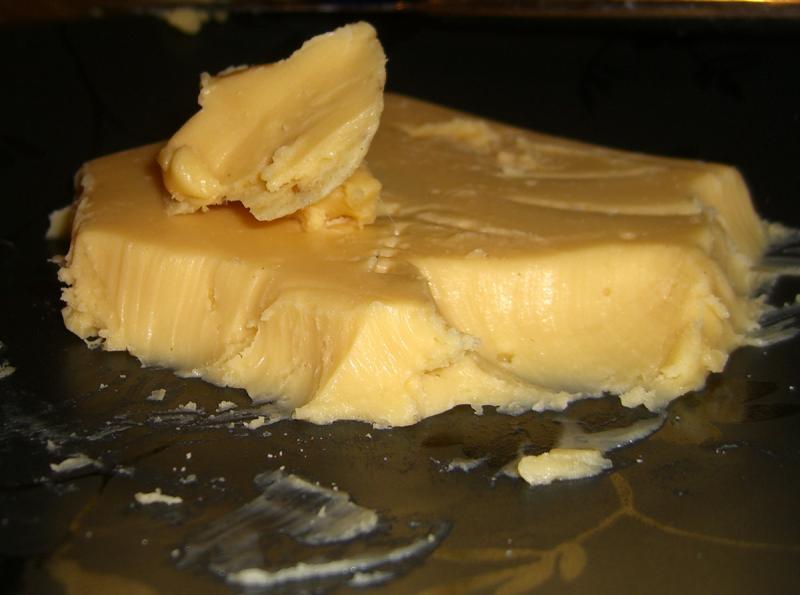
LoftyNotions
participating member-
Posts
161 -
Joined
-
Last visited
Content Type
Profiles
Forums
Store
Help Articles
Everything posted by LoftyNotions
-
I just ordered 1 kilogram of Transglutaminase (Activa RM). I don't plan on willing any of it to my children, so e-mail me if you're interested in a smaller quantity. I'm not sure what interest there'll be, but I'd guess re-distributing it in 50 to 100 gram quantities will work. I'll do it at my cost. Larry
-
I just bit the bullet and ordered 1 kilo of Activa RM. Since that's at least a 10 lifetime supply I'll share it at my cost. E-mail me if you're interested. Has anyone found a source that will actually sell propylene glycol alginate (protanal esther) yet? Larry
-
Jason, This doesn't specifically address safety, but in MC, page 2-274, "MAPP gas or oxyacetylene torches work better than propane or butane for producing high temperatures and no gas flavor" HTH, Larry
-
Chris, I'm just spitballin' here, but would it work to lay strips of skin back on the breast diagonally to approximate the scoring sometimes seen on duck breast? Then when sliced, the skin cut wouldn't look so out of place. Of course, there's always the option of subcutaneous suturing. Larry
-
Yes, 29 by my count. (And six very nice wines served throughout the evening). They started out small, but by the 20th course, they looked HUGE! I keep trying to come up with the appropriate words to describe the food and the experience, but my limited vocabulary fails me completely! This was, by far, the culinary highlight of my life! Larry
-
Chris, it was my pleasure (in many, many ways). The left Pot de Crème topping is a maple-porcini sablé. Larry
-
Modernist Cuisine cooking lab pictures, seventh post The last series of courses of the evening. Pistachio and Hazelnut Gelatos frozen constructed creams Pots de Crème cold infused, acid-coagulated, steamed in a combi oven Caramel Mou sweet/savory caramel, edible film Gummy Worms high fat gel, shaped in fish-lure molds Banana Truffle freeze molded, centrifuged juice
-
Modernist Cuisine cooking lab pictures, sixth post The next series of courses of the evening. Roast Chicken, Jus Gras program roasted in a combi oven, emulsified jus gras BBQ cooked sous vide,flavored in a high tech smoker, centrifuged sauce, ultrasonic fries Pastrami and Sauerkraut cooked sous vide for 72 h, precisely cured and brined, fermented sauerkraut Fruit Minestra vacuum compressed fruit, centrifuged juice One more post to come...
-
Modernist Cuisine cooking lab pictures, fifth post The next series of courses of the evening. Ricotta Gnocchi, Pea Juice, Pea Butter Toast flourless gnocchi, centrifuged pea puree layers Polenta Marinara pressure cooked in mason jars Cocoa Pasta with Sea Urchin constructed bottarga Mushroom Omelet constructed egg stripes, steamed in a combi oven Quillyute Spring Salmon and Meyer Lemon pressure-cooked stock, cold-smoked butter More to come...
-
Chris, the corn tortilla was soft, with a smoother texture than what you would get in a standard version. But so much great food went over my tongue after that course that it's hard to be sure any more. Larry
-
Modernist Cuisine cooking lab pictures, Fourth post The next series of courses of the evening. Baked Potato Soup pressure-cooked potato juice France in a Bowl! snails cooked sous vide, foie gras custard set at low temperatures Caramelized Carrot Soup caramelized in a pressure cooker Cream of Mushroom infused sous vide, foamed in a siphon Raw Quail Egg a touch of protein to invigorate the appetite
-
Modernist Cuisine cooking lab pictures, third post The next series of courses of the evening. Apple Snowball vacuum aerated sorbet, frozen fluid-gel powder Spring Tagine pressure cooked pine nuts and sesame seeds, gellan gel Ankimo, Mandarin, Chamomile torchon cooked sous vide, centrifuged juice gelee Spaghetti alle Vongole-Geoduck, Bagna Cauda, Sea Beans vacuum-molded, centrifuged broth Beef Stew jus extracted at low temperature, marrow cured and cooked sous vide More to come... Larry
-
Really nice work, Chris. Do you have the movie rights sewn up yet for "Chris Cooks MC"? Only fourteen hunderd and some to go. lol Larry
-
Here are the lab notes for that dish: "A tortilla made from dehydrated corn juice, filled with crispy beef jerky flavored with achiote, a fluid gel made from pico de gallo juice, smoked queso fresco, flash pickled onions, and avocado puree. Special ingredients: corn juice, agar Special equipment: dehydrator, microwave oven Process notes: flank steak is cured overnight and microwaved until it becomes a dry yet elastic jerky. The jerky is separated into strands which are then deep-fried until they are very crispy." Chris, I'm the guy who won the lottery without even realizing he had a ticket. I'll try to answer your questions, but most of my experience, out of necessity involves what I've learned in print. Nathan, feel free to weigh in on specifics for any of the dishes served. Larry
-
The World's Most Controversial Food Figure
LoftyNotions replied to a topic in Food Traditions & Culture
He gets my vote as most dickish. Larry -
Modernist Cuisine cooking lab pictures, second post Here are the first 5 courses of the evening. Asian Pear, Watermelon, and Spicy Pickle Chips compressed with pregelatinized starch Roasted Corn Elote freeze dried, N-Zorbit powder Crispy Chicken Skin, Peking Flavors skin gelatinized sous vide, fluid gel foam Taco de Asador fluid gel, microwaved jerky Aperitif de Veau warm constructed cream More to follow...
-
As promised, here are some photos of the MC cooking lab and dinner. I'll break this up into several posts to try not to confuse myself. This first post will show mainly the cooking lab and staff. Oh, and Chris Young, who dined with us.
-
I'm not a chemist, but Nitrate is slowly converted to nitrite in the presence of bacterial fermentation (usually lactobacillus or similar). Nitrite is then converted to Nitric Oxide. Nitrite is a relatively fast acting agent, and nitrate is a slow acting agent dependant on conversion by bacterial action. Here is a Website that explains it a bit more. It turns out that there are 2 compounds called Saltpeter (or saltpetre). The Nitrate form seems to be more common than the nitrite form. Also note that this site lists cure #2 as having 4% nitrate in addition to the 6.25% nitrite contained in both #1 and #2. This differs from other references such as This site. Edited to add: Nitrates in the presence of high heat (frying for instance) can form nitrosamines, considered to be carcinogenic. That's why they're not used in bacon. HTH, Larry Edited to remove extraneous characters and for grammar
-
Prague Powder or Instacure (either #1 or #2) contain 6.25% Sodium Nitrite. Prague Powder or Instacure #2 also contain an additional 1% of Sodium Nitrate. Nitrite is the fast acting form of cure and is used in items such as bacon and other smoked goods that are not cured over long periods of time. Nitrate is a slower release form of cure typically used in items that are cured for long periods of time, such as dry cured salamis, hams, etc. The modern formulations that I have seen are all colored pink. (I'm in the US). Cure #2 is not typically used in foods that will be cooked. Saltpeter is Potassium Nitrate. It is similar in action to Sodium Nitrate, but is outdated and typically not used any more. I wouldn't use it. It concerns me that your Prague Powder isn't labeled #1 or #2. Is there a listing of ingredients on the label? If it lists 6.25% Sodium Nitrite, and 93% or so salt, with no mention of Sodium Nitrate, it will be the equivelant of Cure #1. Do not use Morton Tender Quick unless your brine recipe specifically calls for it. You can't directly substitute it for any of the other cures. HTH, Larry Edited to add I see that what you have does not list ingredients. Frankly I'd put off this project until you can get what is a known good product.
-
"Modernist Cuisine" by Myhrvold, Young & Bilet (Part 3)
LoftyNotions replied to a topic in Cookbooks & References
I found eG about 2 years ago while searching for information on sous vide cooking. The original sv thread was just over 100 pages at the time. I’ve derived a great deal of personal benefit from the information freely shared here. I was particularly impressed with the contributions from Nathan. When I learned that Nathan was writing a book I pre-ordered as soon as it was available on Amazon. Fast forward to March, 2011. I had just received my copy of Modernist Cuisine when I read Nathan’s post asking readers to report typos. Since I was planning on reading the entire book anyway, why not take a deep dive? Because of all the knowledge I had gained from the eG community, and Nathan in particular, it seemed like something I could do to give a little back. So I started reading and sending e-mails… As Nathan mentions in his blog on the Modernist Cuisine website, some of what I sent in was subject to interpretation or a matter of style, some weren’t errors, but others were. I was happy to do this in return for what I had already received, but it turns out that Nathan had other ideas. He invited my wife and me to a dinner at the cooking lab. Talk about having a secret fantasy fulfilled! Our evening there was over the top wonderful. Even while I was in fault finding mode, I was continually amazed at the quality of this book and everything they got right. I’m in awe of the talented group that put the book together, and the staff that fixed the most memorable meal of my life. Now I know what food can taste like. As soon as I can get some pictures of the meal edited I’ll post them here. ETA: The posts in question have been moved here, as they discuss and present cooking with Modernist Cuisine, and contribute more to that discussion than this one. -
Hopefully this post will demonstrate the value of Modernist Cuisine’s approach of example recipes along with best bets parametric recipes. I liked the idea of a trompe l'oeil dish and the Sunny-side Up “Eggs” recipe looked like it fit the bill perfectly. The only problem was, I didn’t have several of the ingredients and supplies necessary to pull it off. The whites in the recipe called for gums I didn’t have, but looking in the best bets table for cold gels it looked like I could use kappa and iota carrageenan to make a cold gel for the whites. I was also missing the molds necessary to freeze the yolk mixture in, but what the heck, yolks are round, why not try reverse spherification? And as long as I’m playing I might as well make the yolks out of mango. Worst case I waste a can of coconut milk, a couple mangos and some time. Heck, I have a blender. I can always make a faux egg smoothie. Since I wanted to do this for a group my wife was hosting I decided to do a trial run, which is why the pictures below are from 2 different sessions. This was my first stab at the whites. I let the mixture cool a little too long and it was setting as I dished it out. I did pour on to cold plates. If I had known better at the time, or really cared, since this was just a trial, I could have re-heated the mix and had a smooth pour. The yolks were standard reverse spherification technique. I tried a 10 percent sugar solution for the setting bath and the yolks floated which didn’t hurt anything. My second try (not pictured) I didn’t use sugar and the yolks sank. That worked fine also. The first time I put the eggs together I placed the yolks on top of the whites. They did have a tendency to slide off. For my second try I poured the whites while they were warmer, onto cold plates. I also did a 2 pass pour. I also found a cutter about the size of the yolks to remove some white so they’d sit down and stay put better. All in all, a fun project that was wery well received. Larry
-
I've successfully melted straight cheddar into liquid (beer)using only sodium citrate. The citric acid is probably the source of your grainyness. I don't know if a higher quantity would help. I believe carrageenans control emulsification / gelling, and the different types (iota or kappa) set differently. I would speculate that kappa sets more firmly than iota based on its use in cheese slices and higher utilization in more firmly set gels. Your generic carrageenans are probably not causing grainyness. Someone up thread used kappa carrageenan for mac & cheese and reported success. HTH, Larry
-
I think what happens, at least on the InSinkErators is that the knives actually pivot on the plate they turn on. If you don't throw bones, ice, lemon / lime peels or something else fairly tough, they freeze in place and don't get thrown out to the periphery of the drum where they do their work. Another thing we never throw down our disposal is onion peels. Larry
-
I'm really glad you asked, because I had only answered half the freezing question. It's also a good thing my wife hadn't sacrificed the cheese to the dogs. As I started heating the cheese, it looked like it was severely broken. I ran to get the camera, but by the time I got back it had fully re-incorporated. As far as sauce thickness at temperature, I felt it was still dipable probably down to even 115 degrees. It was a bit thick at that temperature, but you can hold more cheese that way, right? It actually seemed pretty thin to me at 175. In the following pictures, I'd guess the cheese temperature was around 135 to 145. (Highly unscientific).
-
I made a basic modernist cheese without carrageenans to test what effect freezing would have without them. My ingredients were: Cheddar 215 G Beer 130 G Sodium Citrate 7.5 G Salt 3.2 G The grated cheese melted very easily into the beer / citrate mixture Since we're trying this to find out if it will work for queso, I took pictures as best I could at several temperatures. 175 degrees 165 degrees 155 degrees 145 degrees 135 degrees 125 degrees 115 degrees Also 115 degrees The transition from sauce to cheese seemed to me to happen at 125 and below. I froze the cheese overnight and thawed it to room temperature. Its consistency was quite a bit softer than processed cheese slices. It did hold its form, but was spreadable. I didn't bother reheating it. The main point of this experiment was to see if it would retain its smoothness after freezing. Even with just the sodium citrate there was no coarseness. Here are some pictures taken after thawing to room temperature: It doesn't seem that carrageenans are necessary to keep the cheese from turning granular. I wouldn't add the salt if I did this again. HTH, Larry

